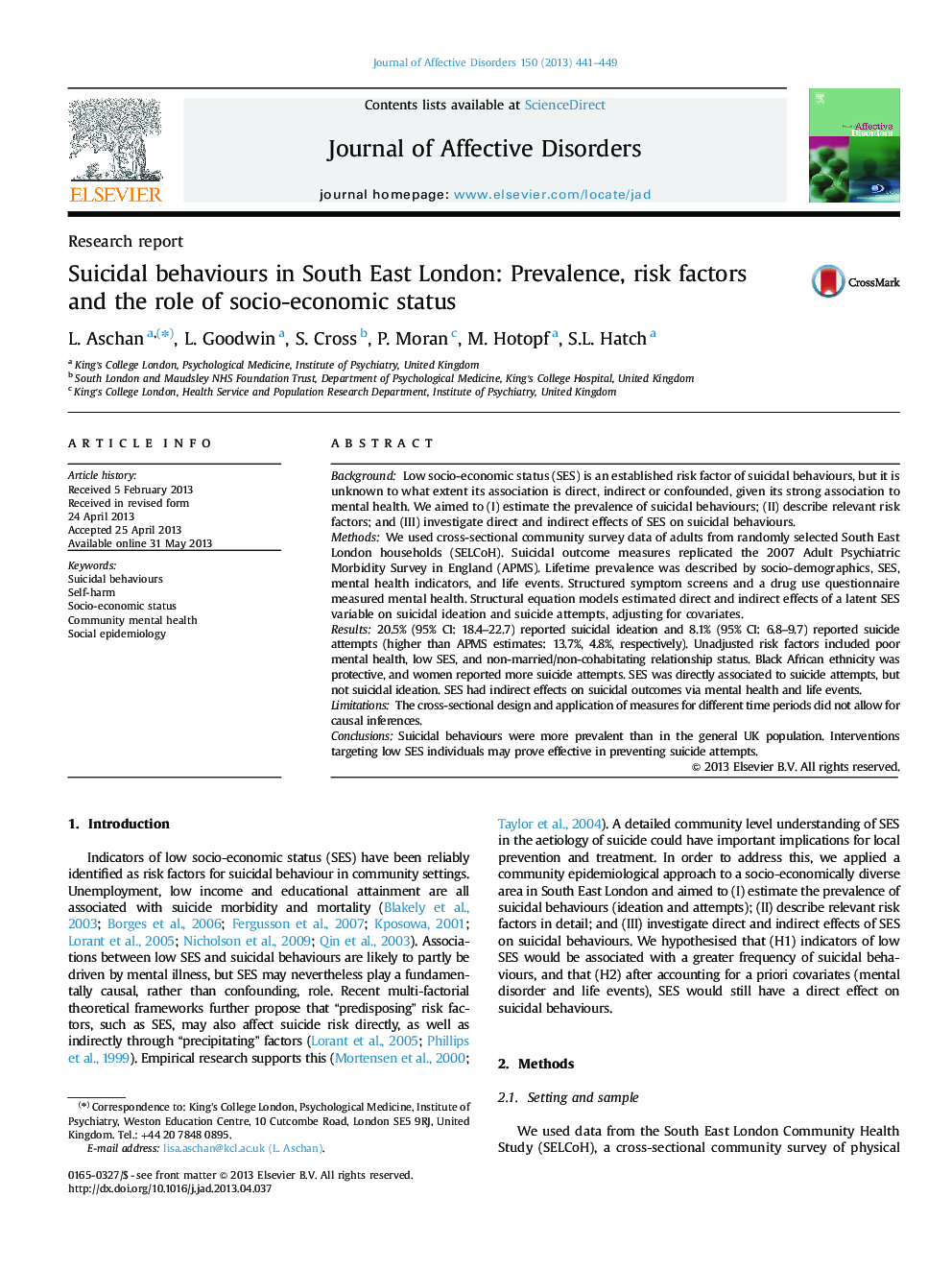| Article ID | Journal | Published Year | Pages | File Type |
|---|---|---|---|---|
| 6234278 | Journal of Affective Disorders | 2013 | 9 Pages |
BackgroundLow socio-economic status (SES) is an established risk factor of suicidal behaviours, but it is unknown to what extent its association is direct, indirect or confounded, given its strong association to mental health. We aimed to (I) estimate the prevalence of suicidal behaviours; (II) describe relevant risk factors; and (III) investigate direct and indirect effects of SES on suicidal behaviours.MethodsWe used cross-sectional community survey data of adults from randomly selected South East London households (SELCoH). Suicidal outcome measures replicated the 2007 Adult Psychiatric Morbidity Survey in England (APMS). Lifetime prevalence was described by socio-demographics, SES, mental health indicators, and life events. Structured symptom screens and a drug use questionnaire measured mental health. Structural equation models estimated direct and indirect effects of a latent SES variable on suicidal ideation and suicide attempts, adjusting for covariates.Results20.5% (95% CI: 18.4-22.7) reported suicidal ideation and 8.1% (95% CI: 6.8-9.7) reported suicide attempts (higher than APMS estimates: 13.7%, 4.8%, respectively). Unadjusted risk factors included poor mental health, low SES, and non-married/non-cohabitating relationship status. Black African ethnicity was protective, and women reported more suicide attempts. SES was directly associated to suicide attempts, but not suicidal ideation. SES had indirect effects on suicidal outcomes via mental health and life events.LimitationsThe cross-sectional design and application of measures for different time periods did not allow for causal inferences.ConclusionsSuicidal behaviours were more prevalent than in the general UK population. Interventions targeting low SES individuals may prove effective in preventing suicide attempts.
